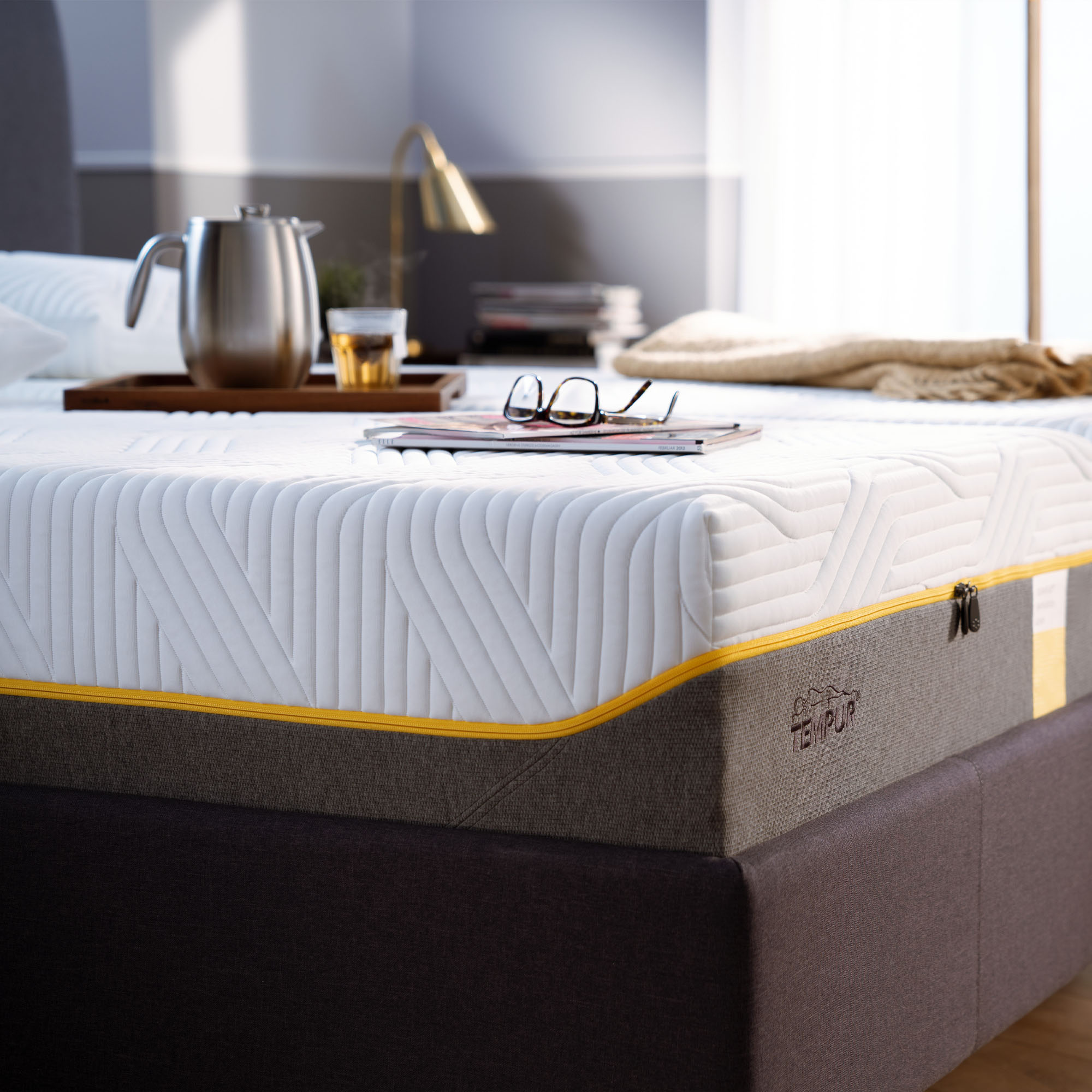
Our Tempur Sensation Elite mattress review puts the brand's firmest memory foam mattress through its paces to see how it compares to the best mattresses Ideal Home has tested.
Quick review
When I first laid down on this Tempur mattress I knew I might have found 'the one'. Which was surprising, as I'm not usually a fan of memory foam mattresses and the Tempur Sensation has an all-foam construction, with no springs in sight.
However, Tempur is one of the few all-foam mattress manufacturers that offers its memory foam mattresses in four different tension options – soft, medium, medium-firm and firm. You'll pay more for that privilege, but if you're looking to invest in a better night's sleep then those tension options should be music to your ears. That's because our body weight, body shape, and preferred sleeping position can all affect how a mattress feels to us, so having the ability to tailor the mattress tension to our individual requirements is a huge plus point.
I found that not only did this mattress elicit sighs of contentment from every tester who laid down on its surface, but if a restless partner is causing sleep disturbance, then this is the one mattress that might just be able to work miracles in saving your night-time relationship thanks to its superb motion isolation.
However, it's not perfect. I also found it to sleep warm, so if you're a hot sleeper this can mean overheating at night. Plus, it lacks edge support and is very heavy (and tricky) to move.
That said, this is one comfortable mattress, and a 100 night sleep trial offers a great opportunity to see if it's also the one for you.
Specifications
Type: Memory foam
Construction Materials: Memory foam, foam
Number of springs: N/A
Memory foam: Yes
Sizes: Single / Double / King / Super King / Small Single / Long Single / Special Sizes
Comfort level: Tempur rates Firm, Ideal Home rates Medium
Height: 25cm
Manufacturer sleep trial: 100 nights
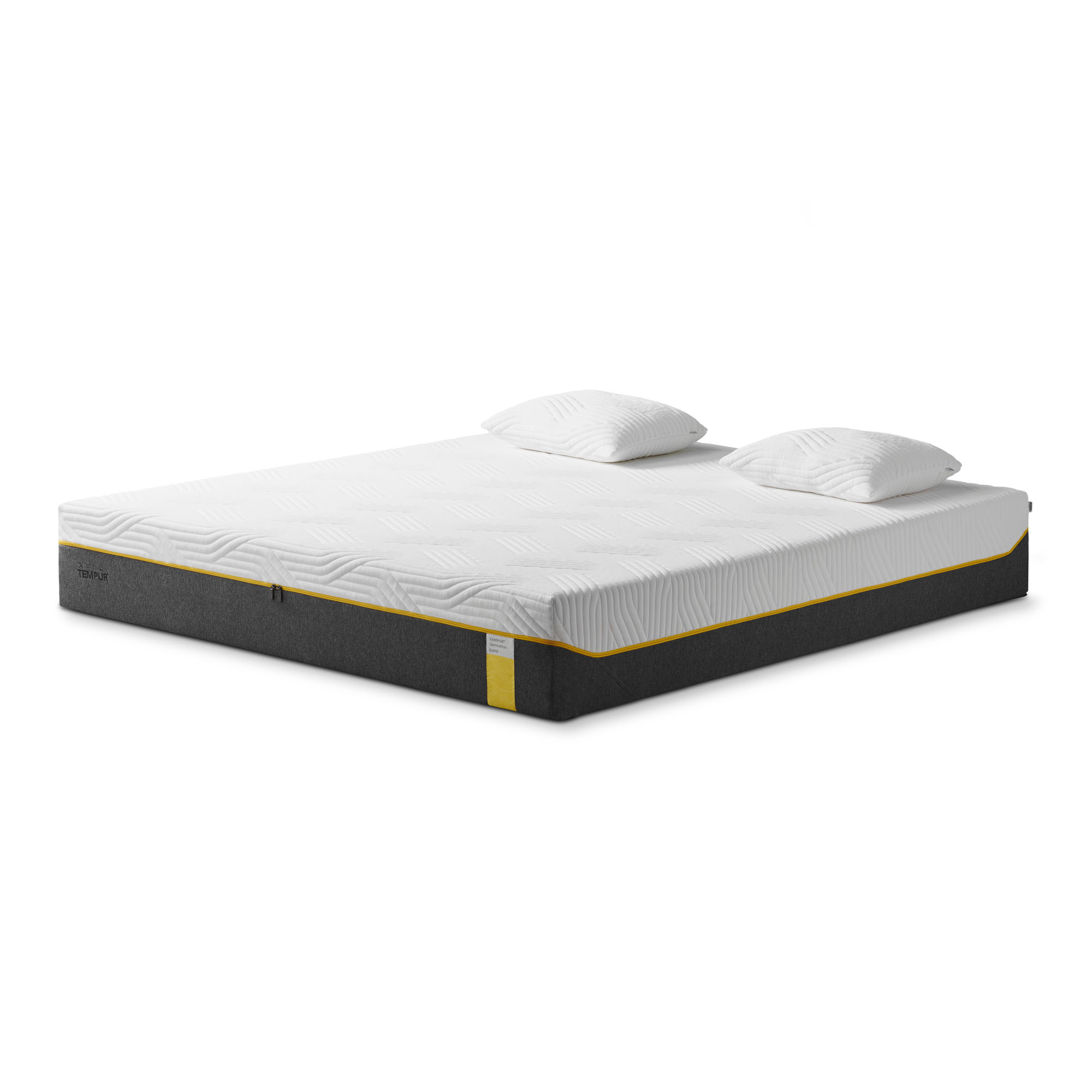
1. Comfort
As someone who isn't that keen on being enveloped by a softer memory foam mattress, the Tempur Sensation Elite – part of the brand's firmest all-foam mattress collection – could have been made just for me.
Rather than allowing you to sink deep into its surface with thoughts that you'll never be seen again, the Sensation range offers the best of both worlds; a malleable 7cm deep top layer of viscoelastic foam that gradually moulds to your body to offer cushioning support as your body heat warms it, with a firmer base layer of foam that means there is still some welcome resistance to the mattress.
I tested this mattress in the midst of moving house, so my back and shoulders were sore from hefting heavy moving boxes around. Every time I laid on this mattress it cushioned every aching body part in just the right way – supporting the natural arch of my spine when laid on my back, and allowing my shoulder to sink deeper into the mattress to keep the spine aligned when side sleeping.
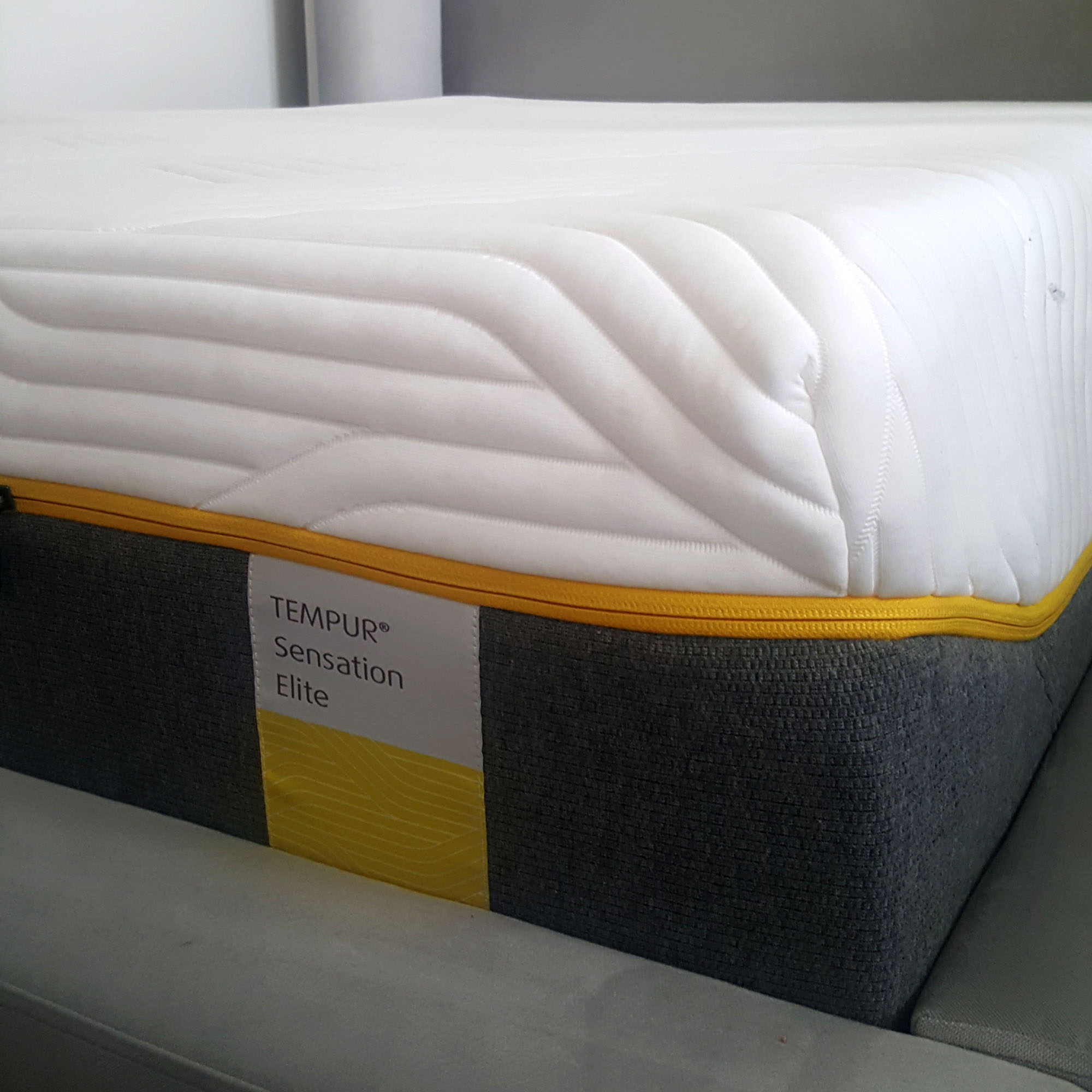
In fact, every tester who laid on this mattress during the review period had the same reaction – sighs of satisfaction as they sank into its embrace. The only position in which I still found it had a little too much give was when laying on my front, as my hips dipped just a little too low for comfort, putting pressure on my lower back.
As Tempur's firmest feel memory foam mattress, it's also a great option for those of us who are heavier. Heavier people will naturally sink deeper into a mattress and so need more resistance than a soft mattress can offer. Lighter people may perhaps find the Sensation a little too firm, but the great news is that – unlike most of its competitors – Tempur offers each of its mattresses in four tension options, making finding the right feel for you far easier.
The brand also offers choice in mattress depth – with options of 21cm, 25cm or 30cm – which allows you to tweak the construction further. The deeper depths again make this foam mattress more suitable for those of us who are heavier, as well as catering to those who may need a higher mattress surface for mobility.
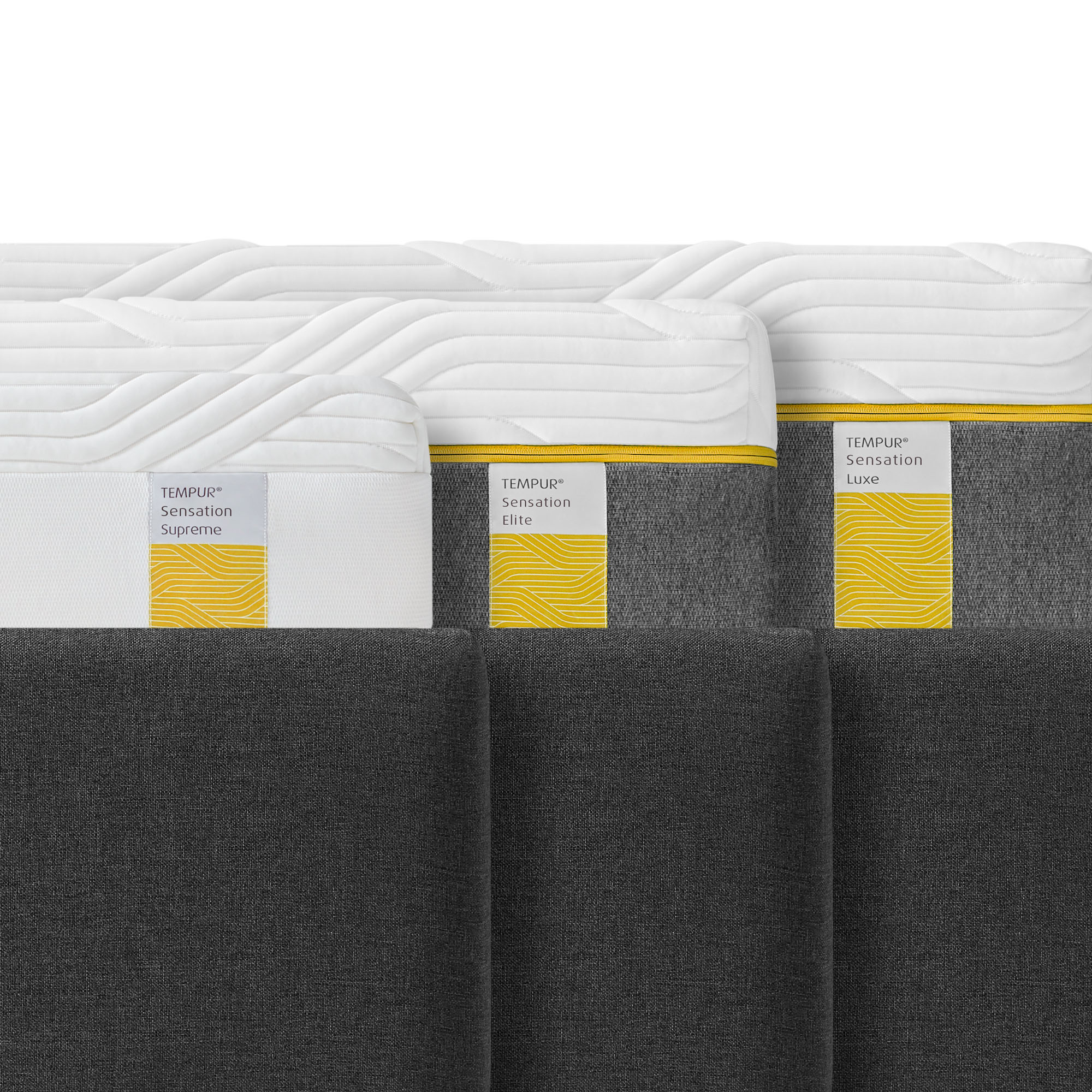
2. Responsiveness
Tempur says that the Sensation is a good option for those more used to sleeping on a pocket-spring mattress, as its firmer feel will 'create the sensation of 'bounce' but without springs, for supreme comfort and pressure relieving support'.
I can't say that I felt it offered the 'bounce of a pocket-spring mattress' like the brand claims, but it definitely felt like a more responsive sleep surface than your usual memory foam mattress which can often feel a little 'flat' and 'dead'.
That said, it was still a struggle to turn over at times. The memory foam adapts itself around your body to 'cradle' you – this makes for a super comfortable 'hug', but when you come to change position you have to fight a little to get out of the depression that's formed around you. I wouldn't say that's too much effort for most sleepers, but if you have reduced mobility then it's something to bear in mind.
3. Motion isolation
However, where the Tempur Sensation loses marks for responsiveness, it gains them in motion isolation.
I laid on one side of the mattress whilst my co-tester did an exaggerated job of tossing and turning and jumping on and off of their side of the bed, and felt almost nothing. Thanks to the dampening effect of all those foam base layers, and the 7cm memory foam top layer, all of that movement was isolated and I remained completely undisturbed on my side of the mattress.
Tempur has a great demonstration of the Elite mattress' motion-isolating powers on its website that they call The Wine Glass Test. This rather dramatic demonstration involves a bowling ball dropping from a great height onto one side of the bed whilst a pyramid of stacked wine glasses (filled with red wine no less) remain undisturbed on the other side of the mattress.
Whilst your sleep habits might not include quite such an interesting set-up, there's no denying the 'grump-factor' that can result from a bad night's sleep, and if your relationship is suffering due to a restless bed partner whose movements are disturbing your sleep, or vice versa, then this could well be the mattress to solve some of those relationship woes.
The cushioning memory foam surface also makes it a great option if the two people sharing a bed are significantly different weights, as the cradling memory foam surface stops the lighter-weight sleeper from rolling into the mattress centre towards the heavier-weight sleeper.
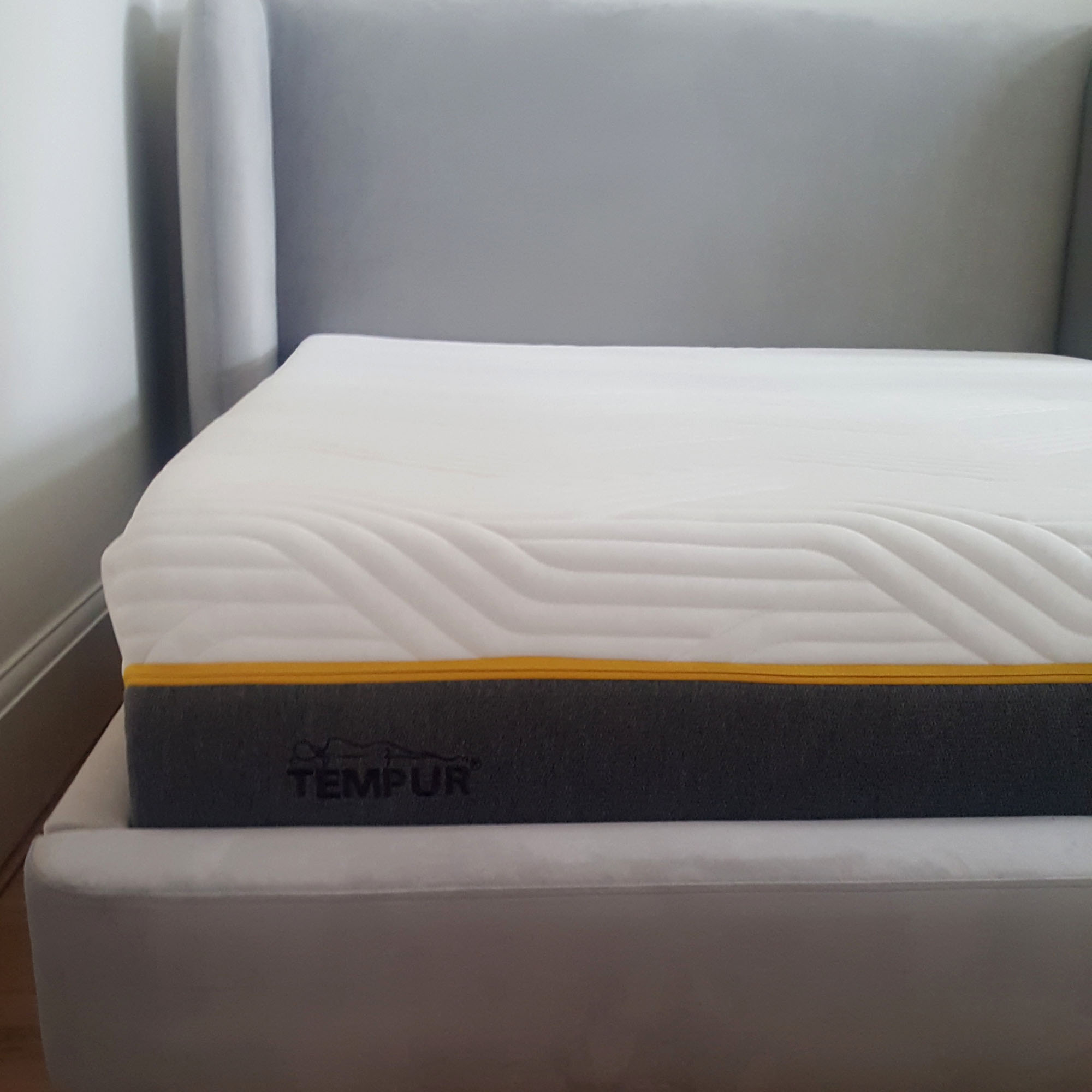
4. Temperature regulation
And then... we come to some of the downsides of this mattress; poor temperature regulation being one of them.
Admittedly I am a hot sleeper, and it doesn't take much to make me overheat at night, but my tendency to sleep warm wasn't helped by the Sensation Elite. I found it lacked breathability and I'd often wake feeling too warm or clammy even on cool nights.
Memory foam is notorious for causing overheating, and whilst other brands make efforts to combat this problem – like Simba who opts to use open-cell memory foam (more airflow making for a cooler sleep) or graphite-infusions designed to draw heat away from the body in its Simba Hybrid Original mattress and adds a layer of breathable wool into its Simba Hybrid Pro mattress – I couldn't see that Tempur's memory foam offered as much attention to temperature control.
This said, Tempur has now launched its new Pro® SmartCool™ range which aims to address this problem. We're currently testing out the new technology and will report back on whether its solved the issue.
5. Edge support
Whilst this mattress is a delight to roll into at the end of a long day, if you sleep too close to the edge of the Tempur Sensation Elite mattress, then sadly there's a good chance you might be rolling straight back out again, because I found that soft memory foam surface will keep on deflating until there's very little left to keep you in bed.
When choosing a mattress size I'd always recommend opting for the largest mattress possible so that everyone has plenty of space away from the sides of the mattress. But, this isn't always possible, in which case this could be an issue.
The lack of edge support also means the mattress may not be ideal for anyone who suffers from poor mobility. When you sit on the edge of the bed to position yourself to stand up then you tend to sink into the mattress, so you don't have a lot of support to push against to raise yourself to a standing position. It won't be an issue for all, but could be a factor to consider.

6. Sleep trial
It can be hard to find the right mattress, as both our preferred sleeping position and body weight can significantly affect how a mattress feels for each individual. That's why a sleep trial can be a really useful tool.
A sleep trial usually means that you can buy the mattress and sleep on it in your own home for anywhere between 30 - 365 nights to get a feel for whether it's the right option for you.
If you buy direct from the Tempur the brand now offers a 100 night sleep trial which makes it a lot easier to try to find the right mattress tension for your needs. This isn't quite as long as some – Simba, Emma, and Brook +Wilde currently offer 200 nights, and Nectar a whopping 365 night sleep trial – but should be plenty of time to test out the mattress feel.
This also gives you chance to test out the mattress at different times of year, which with memory foam, I find can make a difference. As memory foam's viscoelasticity is affected by heat, generally speaking the sleep surface will feel softer and more pliable in warmer temperatures and harder if your bedroom is cold (until your body heat warms the memory foam up, that is).
7. Ease of care
This is a one-sided mattress, which means you sleep on one side only, so there's no need to worry about flipping the mattress. Tempur advises you 'just' need to rotate the mattress head to foot 'from time to time' to ensure even wear and tear.
I say 'just' because this is a lot easier said than done. Annoyingly, the mattress doesn't have any side handles, and that thick memory foam layer makes it very heavy. As such, rotation is definitely a two-person job, and still not without issues as without handles it's hard to get a good grip on the mattress.
It could be argued that a one-sided mattress may lack longevity compared to a high-quality two-sided mattress. After all, that one side will get more wear and tear than if you could flip it and sleep on both surfaces. I've only owned this mattress for a few months, so it's as yet too early for me to comment on its durability. However, I did delve into the mattress's wider customer reviews to see how owners rated it over the longterm and, as of writing, couldn't find any negative reviews related to durability.
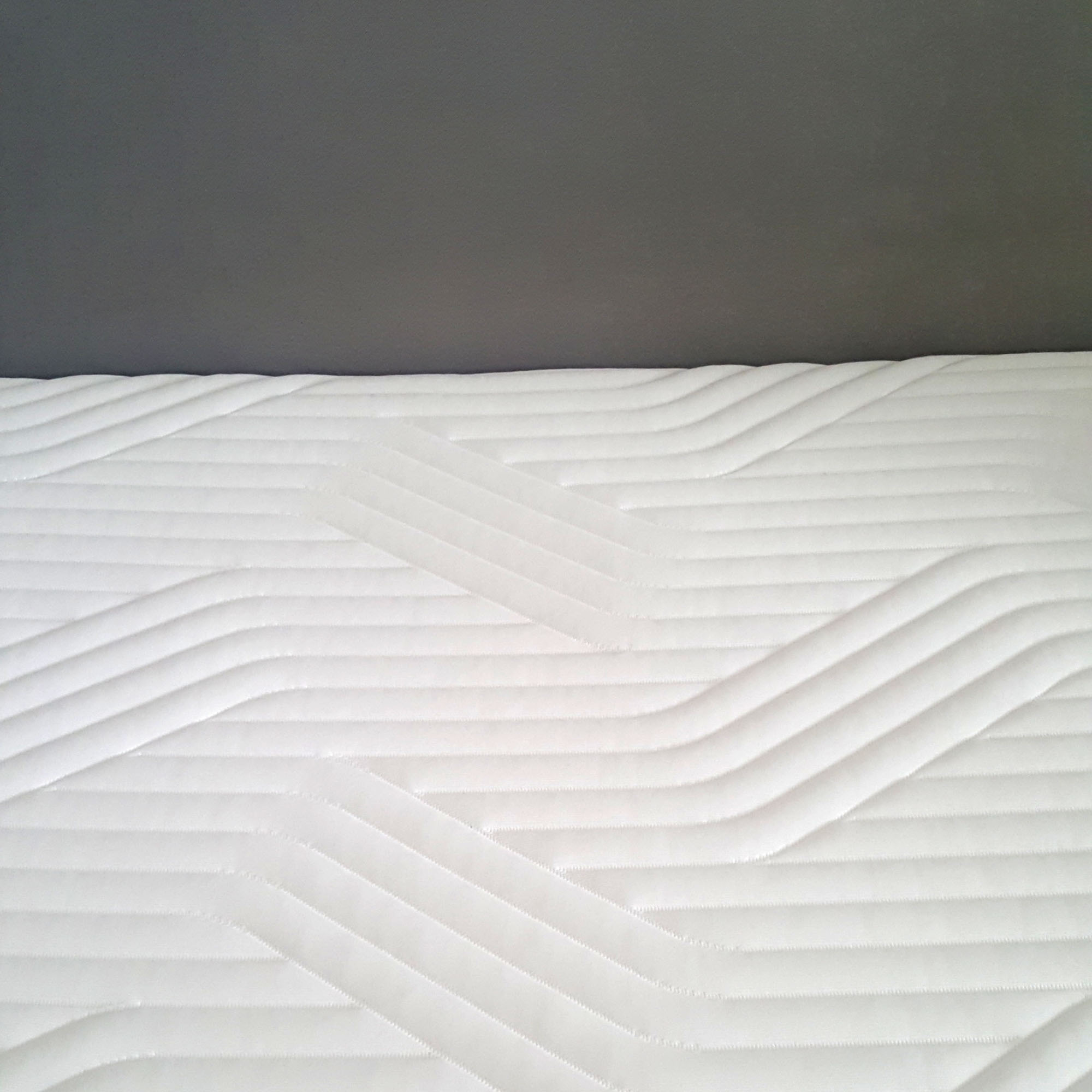
8. Delivery
Unlike many of the newest generation of memory foam mattresses – we're talking Emma, Nectar, and Simba here – the Tempur Sensation Elite mattress arrives flat rather than rolled into a box.
Once you're hands-on with this mattress it's easy to see why. The firmer structure of the Tempur Sensation Elite means it doesn't bend as much as many all-foam mattresses, and, depending on which depth you opt for, it's a good deal thicker than many of its all-foam rivals.
Whilst its flat delivery won't be an issue for everyone, if you have a narrow staircase or awkward hallway to negotiate on the way to your bedroom, a mattress-in-a-box may be easier to manouevre.
It's also well worth noting that this mattress is heavy. Really heavy. Although it's generally not advised, I can usually manhandle a double mattress onto the bedframe by myself, but this mattress was a real effort, even with two people – as already mentioned, an effort made harder due to the lack of handles on the mattress.
Thankfully, as of writing, if you order direct from Tempur the brand offers free delivery and installation of the mattress to the room of your choice, which I'd say is a must. If you buy from a third-party stockist then it's well worth checking their delivery process, as I wouldn't have wanted to have to get this mattress upstairs by myself.
Other than its weight, one other factor worth noting is this mattress's initial smell. I'm more sensitive than most to the smell of memory foam off-gassing, but there was no missing the odour of this mattress once the thick protective plastic it was delivered in was removed.
Many won't be bothered by the smell, and Tempur states the odour is completely harmless and will dissipate over time – which it did, although it took a good month – but if you also struggle with the initial strong chemical aroma then the brand suggests allowing the mattress 'to air or breathe, preferably uncovered in a well-ventilated area before and after use to speed up the process'.

9. Environmental impact
Memory foam mattresses can pose environmental problems. This is partly because the ingredients used to make memory foam (and the other foams that tend to be layered into a synthetic mattress) are derived from non-renewable petrochemicals, and partly because at the end of a mattress’s lifespan these same materials are very tricky to recycle. This can often mean mattresses end up in landfill where they take a very long time to biodegrade and can cause more environmental harm.
Mattresses made predominantly from natural materials – such as the Hypnos Pillow Top Select mattress or Woolroom Hebridean 3000 mattress – can be the best bet for a low impact mattress. That’s because the natural materials used are derived from renewable sources and are easier to recycle or biodegrade when the time comes for a new mattress (experts say you should replace a mattress every 7-10 years).
But, some synthetic mattress manufacturers are making significant efforts to reduce the impact of their production processes. Simba is perhaps the manufacturer doing the most to address its environmental impact, but, according to its website, Tempur is also making efforts towards more sustainable processes.
The brand is working to achieve carbon neutrality by 2040 and several of its manufacturing facilities are now sending zero waste to landfill. The brand states it’s also looking into ‘finding new ways to reuse and recycle polyurethane (one of the key ingredients in our TEMPUR ® Material)’. However, we couldn’t see that any of the materials used within the Sensation mattress come from recycled sources, or that Tempur offers a recycling scheme to take back its used mattresses. There also wasn’t a lot of clarity we could find on what happens to mattresses returned via its sleep trials.
10. Value for money
Tempur's mattresses are a definite investment. A double Tempur Sensation mattress is currently £1499, whereas an all-foam mattress from Nectar currently costs £600, and the bestselling all-foam Emma Original mattress is just £499 at full price (and often on sale).
So why is a Tempur mattress so much more money? And, is a Tempur mattress worth it? Well, in part, it's likely a Tempur mattress is a little more expensive because of the kudos its name carries.
In the 1960s NASA experimented with creating a new material – originally dubbed 'slow spring back foam' or viscoelastic – for use as cushioning in its spacecraft. When NASA eventually released this invention to the public domain, Tempur's founders saw its potential as a new mattress surface and set to work adapting the material to create 'the world's first viscoelastic mattress'.
Tempur remains the only mattress brand to hold NASA's Certified Space Technology® license – an accolade that recognises brands and manufacturers producing products and services based on space-related technology. As Tempur boldly states on its website, 'TEMPUR® Material is memory foam, but no other memory foam is TEMPUR® Material'. But, there is more to it than just that.
In contrast to the more affordable all-foam offerings, like the budget Emma Original mattress or the Nectar Memory Foam mattress that take a one-size-fits-all approach to their memory foam's firmness, Tempur offers its mattresses in four tension options – soft, medium, medium-firm, and firm.
That means that if you're a lighter weight sleeper, or a heavier weight sleeper, you're much more likely to find a mattress in Tempur's range that suits your specific requirements. Is that worth the extra £1000 you'll be dishing out compared to the Emma Original mattress? It depends how much you value a good night's sleep, but I for one, was really impressed by the Tempur mattress's quality and comfort levels.
How I tested
Sleep position: combination sleeper, but mainly side and front
Tension preference: medium firm
Sleep problems: hot sleeper
During our mattress testing process I assessed ten factors that the Ideal Home team deems vital to any mattress purchase.
I assessed the mattress for comfort, responsiveness, motion isolation, temperature regulation, and edge support through at home testing. This means that I slept on the mattress for a minimum of two weeks before writing my review – in this case I slept on the Tempur Sensation Elite for a month.
I also took into consideration ease of care, the delivery process, any sleep trials available, value for money, and, where possible, third-party feedback from other verified owners before writing my review and giving this mattress a star rating.







